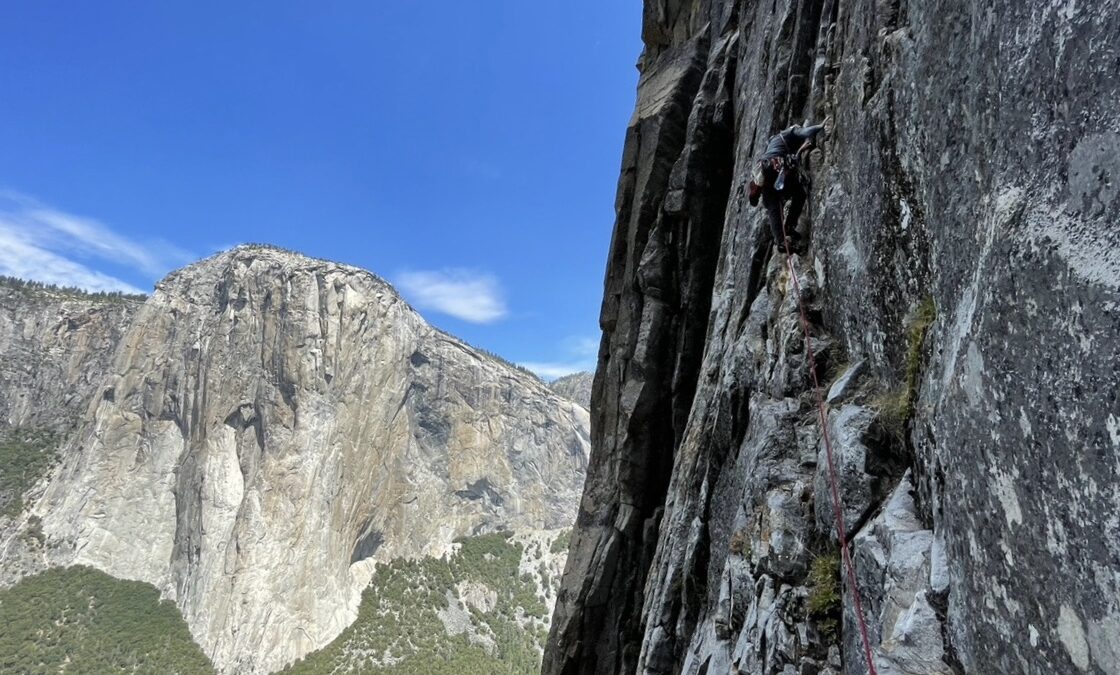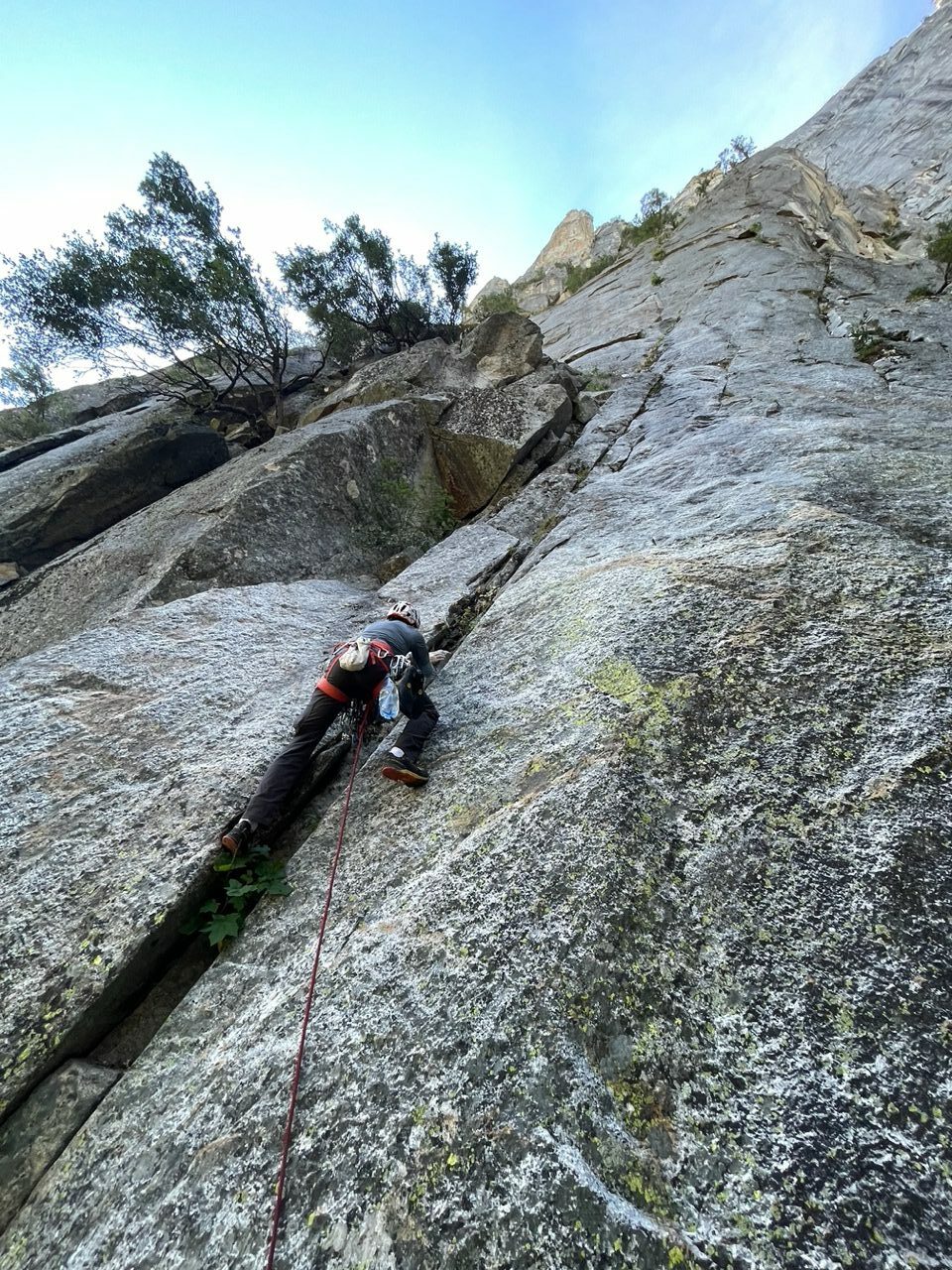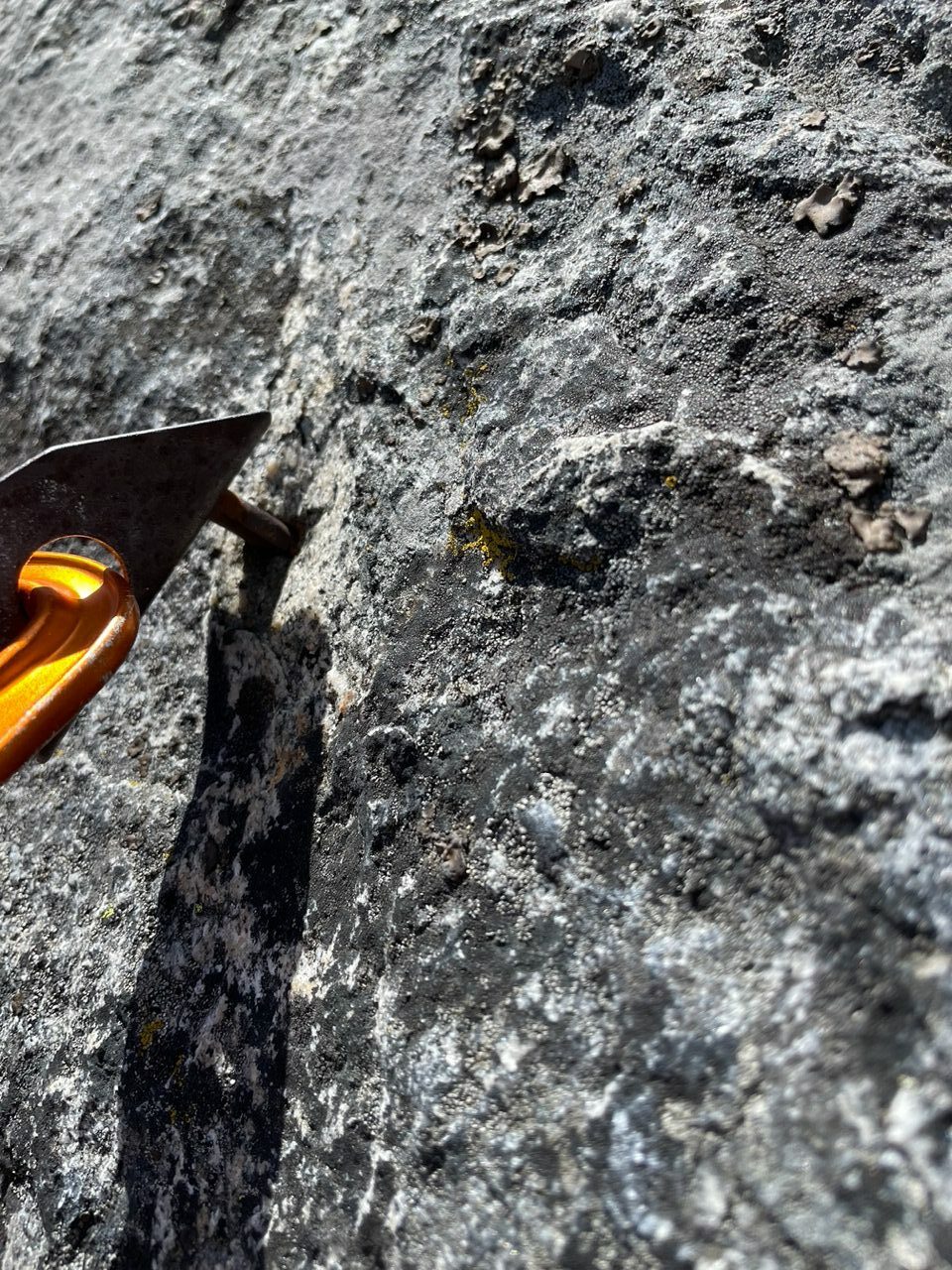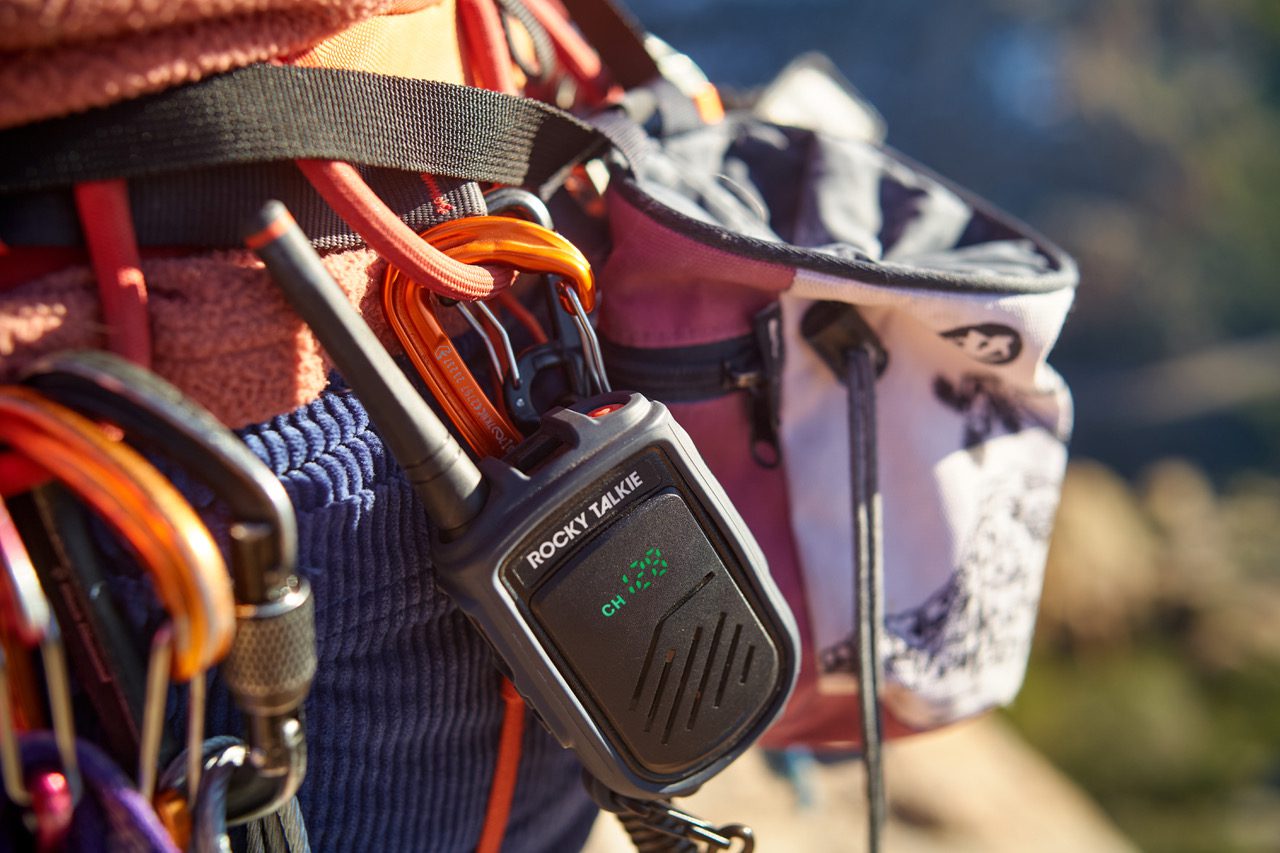This Rock Climb Changed My Mind on Radios
How a risky route on Middle Cathedral in Yosemite reinforced the lifeline of communication through radios

July 3, 2022, North Buttress of Middle Cathedral, Yosemite Valley. We had a deal, my late climbing partner and me. Over the decades, when we bouldered and roped up in Yosemite Valley, if it were hard face climbing or techy, I would lead. I knew how to bare down on holds and make moves that weren’t 100 percent secure, but he could not. He just wasn’t wired that way. But if it were 5.9 hand jamming, he would lead since he would basically solo this terrain, making his pitches wicked quick. But on 5.10s and 11s, he would freeze up and stall out for an eternity, especially when tinkering small pieces in. Climbing with him was very black and white.
So when he picked the North Buttress on Middle Cathedral and told me he was considering soloing it, we agreed that he would lead that day. “It’s the North Buttress,” he emphasized, “not the DNB [Direct North Buttress].” He was a man of few words.
I was aware of DNB, having scared myself up it in the 90s (too little water, no topo), and knew how massive and intimidating Middle Cathedral is; after all, it’s 2,000 feet tall and the size of Half Dome. El Cap, across the Valley, might dwarf it, but make no mistake, Middle Cathedral is a huge wall.
Of the two Buttress routes, DNB is vastly more popular (I assume) than the North Buttress. DNB is a route Mountain Project describes as “The belays are marginal. Every pitch is runout, some grossly. Route finding is difficult on a number of pitches, especially at the start of the descent. There are offwidths or squeeze chimneys…”

I expected North Buttress to be about the same. But it wasn’t. It’s not a route I would repeat for various reasons.
Warren Harding, Frank Tarver, Craig Holden, and John Wittmer put up the North Buttress in 1954 (DNB was put up in 1962 by Yvon Chouinard and Steve Roper), four years before Harding established the Nose on El Cap. I imagined Harding up there in the early 50s, where he spent a week on the route, just whaling away on pitons in the shadows, and El Cap, in glorious light, looking down on him.
“This was the first major route done on Middle Cathedral,” continues Mountain Project. “These days, it is sort of a poor man’s DNB, less classic.” By the look of the tat throughout the route, some tied around trees, others aging through the decades and strung around chockstones, I wondered if more teams had bailed – terrifyingly so – than succeeded on the route.
Since climbing the North Buttress, I’ve met a few teams who’ve done it, and they all say the same thing – this is where all the rockfall comes down on Middle. It’s like a rock chute. One climber told me that, while high on the route (for some reason he’s done it several times), he encountered a tunnel – which you usually go through — filled in with rocks, so he’d climbed around it and kicked them all out.
Back to that hot July day with my friend. During the approach, once we passed the classics, Central Pillar of Frenzy, the DNB, we tucked west around the buttress and trudged up the talus in the shade. He grabbed a few pieces and took off like a rocket. He mentioned that I’d be on belay when I felt him tug on the rope, but I never felt the tugs. Not once, the whole day, and I just had to assume he’d get me on when he had the chance. Or something.
That’s the day I realized I needed a better communication system. After the route, I picked up a pair of cheap radios off Amazon, fastened micro carabiners to them, and took them out, guiding on Fresno Dome (south of Yosemite) and up the Royal Arches in Yosemite with a friend. The radios fell off my friend’s harness twice since my tape and rigging job was poor. Plus, the radios weren’t perfect for climbing; the buttons were in the wrong place, so I would always hear static when high-stepping and pressing the radio into my chest or grinding my body through a chimney.
After the radios stopped working, my partner dropped her phone, which she somehow found after rapping a whole pitch, but the screen was badly cracked. Phones were cumbersome; cheap radios weren’t doing the trick. So, I upgraded to a pair of Rocky Talkies, which have been phenomenal. And now that Rocky Talkie released the 5W radio, with greater range, better battery life, and a slew of other features, it’s become a necessary tool whenever I venture more than one pitch off the ground.

Back to the North Buttress. My buddy is gone, out of sight, likely linking the first three pitches in one 80-meter stretcher. He’s in approach shoes, and so am I, and though he looked solid getting into the flares and smears just right, when I tried to replicate him, I felt wobbly and insecure. (I was injured that day, but I didn’t know that until later.)
I didn’t know if I was on belay or what was happening above. Plus, we were on a 9mm rope, so I knew if I pitched off, the rope would stretch forever. It seemed that for at least half of pitch one, I would deck out in the talus due to rope stretch if I popped out of the 5.7 glassy, loose terrain. I couldn’t yell commands like “take” since my words would be lost in the wind.
The issue came at the headwall at three-quarters height. I’d just followed a heinously loose pitch of teetering blocks. I wanted to save energy, so I power stemmed and swung around on the blocks, figuring it was easier than gingerly moving over each one. At this point, I knew I was on belay (or assumed I was), so I didn’t stress too much about being caught by my partner if something dislodged. But there were so many loose blocks – every hold – and to make matters worse, when I reached my partner at the anchor, I noticed he didn’t see a fixed pin and thus didn’t clip it, and I was only anchored to two micro offset cams shoved in shallow cracks. They weren’t even good pieces. I don’t think either of them would hold a lead fall.
Then he left and muttered something about us having to simul-climb since he was linking the next pitches and that a 70-meter rope didn’t make it. We had an 80-meter, but that didn’t come up in our brief exchange. And he was gone again.
When the rope came tight, I began climbing very delicately, as the 5.10 started right away, comprised of a thin crack switch where he didn’t move for 20 minutes. Now I was there, struggling to keep my composure as I didn’t know if I was on belay, if I would shear us both off the wall if I botched it, and I couldn’t quite read the sequence. Being within reach of an in-situ sling that was probably older than me, I grabbed it and stood up in it like an aider. Then it snapped, and I was airborne.

For those few seconds, I didn’t know what would happen. I shot down like a rocket, and the rope stretched and stretched just as it would have as if I were clipped to a solid anchor. So apparently, I was on belay.
When I finally reached my partner, I came upon the best anchor on the route—a pile of pieces in solid stone—and I was relieved. We took a break, and more choss followed. Then we overcame a useless ancient bolt ladder; I could probably pull them out by hand. The route ended with an offwidth/squeeze that had me fearing I would slip inside and that the mountain would chew me up and never let me out.
On the top of the route is where things got serious again. I was insistent that we should rope up for the Catwalk traverse, and he was opposed, so we compromised, and he belayed me, but when it came time to belay him over to me, he would untie and let the rope fall away before I reeled it in.
There we were, downclimbing and traversing on potato chip flakes on a glassy face. The rock was squeaky and golden, and inches separated us from a fall with 2,000 feet of air below us.
We made it down without incident, with him walking in his climbing shoes since he’d dropped one approach shoe while army crawling under a tree midway up the route.

The moral story here is radios. Clear communication would have made all the difference that day.
Today, I climb with the Rocky Talkie 5 Watt Radio ($165 each), which has five days of power and five watts for optimal range, up to 2.8 miles in rugged mountains. It’s durable, waterproof, and shatterproof, and it is designed for white-water use, so you know this GMRS (General Mobile Radio Service) radio will survive an El Cap storm. It is compatible with the Trango Quantum ultralight carabiner, smaller (and lighter) than the one that comes with the previous generation Mountain Radio. Currently, the 5-Watt is sold out, but pre-orders are available.



